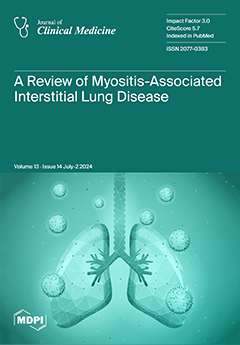Background/Objectives: Patients with infective endocarditis (IE) are more susceptible to acute kidney injury (AKI). The presence of AKI increases in-hospital complications in these patients.
Methods: The 2016–2020 National Inpatient Sample (NIS) database consisting of adult admissions with IE and AKI was utilized. The primary outcome was all-cause inpatient mortality. Secondary outcomes included fluid and electrolyte disorders, stroke, septic arterial embolism, septic shock, cardiogenic shock, valve surgery, vasopressor support, mechanical ventilation, length of stay (LOS), and total hospital charges.
Results: Out of a total of 63,725 adult admissions with IE, 16,295 (25.5%) admissions had AKI. Patients with AKI were more likely to be males (63% vs. 57.6%,
p < 0.001) and older (55.8 vs. 50.4,
p < 0.001). A higher proportion of these patients were admitted to large hospitals (60.6 vs. 55.3%,
p < 0.001) and urban teaching hospitals (81.9 vs. 75%,
p < 0.001). Patients with AKI had higher LOS (17 ± 16.1 vs. 11.32 ± 11.7,
p < 0.001) and hospital charges (USD 239,046.8 ± 303,977.3 vs. USD 124,857.6 ± 192,883.5,
p < 0.001). Multivariable analysis showed higher odds of all-cause inpatient mortality (aOR: 2.22, 95% CI: 1.81–2.73,
p < 0.001). They also had higher risk for fluid and electrolyte disorder (aOR: 2.31, 95% CI: 2.10–2.53,
p < 0.001), septic arterial embolism (aOR: 1.61, 95% CI: 1.42–1.84,
p < 0.001), septic shock (aOR: 3.78, 95% CI: 2.97–4.82,
p < 0.001), cardiogenic shock (OR: 3.37, 95% CI: 2.65–4.28,
p < 0.001), valve surgery (aOR: 1.52, 95% CI: 1.35–1.71,
p < 0.001), vasopressor requirement (aOR: 1.99, 95% CI: 1.52–2.60,
p < 0.001), and mechanical ventilation (aOR: 2.75, 95% CI: 2.33–3.24,
p < 0.001). The association with stroke was elevated but not statistically significant.
Conclusions: This large retrospective analysis demonstrated that patients with AKI and infective endocarditis had increased mortality, adverse hospital outcomes, increased LOS, and hospital costs.
Full article






